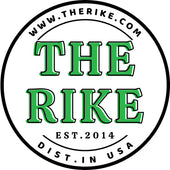Exploring the World of Healing Plants: Sustainable Practices for Modern Herbalism
Herbalism, the practice of using plants for medicinal and therapeutic purposes, has experienced a resurgence in popularity in recent years. As more individuals seek holistic and natural alternatives to conventional medicine, the interest in healing plants has grown. However, with this growing popularity comes the responsibility to adopt sustainable practices that preserve our plant allies and protect the environment. This article will explore the world of healing plants, the principles of modern herbalism, and sustainable practices that ensure these powerful tools remain available for generations to come.
The Importance of Herbalism
Herbalism is one of the oldest forms of medicine, with roots tracing back thousands of years. Different cultures around the world have utilized plants for healing, spiritual balance, and wellness. The modern revival of herbalism is driven by several factors:
- Growing Awareness of Holistic Health: People are increasingly recognizing the interconnectedness of mind, body, and spirit.
- Interest in Natural Remedies: Many seek alternatives to pharmaceuticals due to side effects or the desire for more natural solutions.
- Cultural Preservation: Many indigenous cultures focus on the wisdom of traditional herbal practices, incorporating them into modern health care.
Understanding Healing Plants
Healing plants are those with properties that can aid in physical or mental health. These include:
- Medicinal Herbs: Common examples include echinacea, ginseng, and peppermint.
- Edible Plants: Many plants such as garlic and turmeric are both food and medicine.
- Aromatic Plants: Herbs like lavender and rosemary provide not just culinary benefits but also therapeutic aromatherapy effects.
Key Components of Healing Plants
The efficacy of healing plants is often attributed to their chemical constituents, including:
- Alkaloids: Found in plants like belladonna, they have potent medicinal effects.
- Flavonoids: Present in many fruits and vegetables, these compounds possess antioxidant properties.
- Tannins: Known for their astringent qualities, tannins are found in oak and witch hazel.
Modern Herbalism: An Overview
Modern herbalism encompasses a wide variety of practices, blending traditional knowledge with contemporary research. Herbalists may focus on:
- Clinical Herbalism: Integrating herbal remedies into individualized treatments alongside conventional care.
- Community Herbalism: Providing education and resources to local communities.
- Herbal Education: Offering classes and workshops to enhance knowledge about herbs and their applications.
Herbal Preparations
Herbalists employ various methods to prepare plants for use, including:
- Tinctures: Concentrated liquid extracts made from soaking herbs in alcohol or vinegar.
- Infusions: Herbal teas made by steeping leaves or flowers in hot water.
- Decoctions: Boiling tougher plant parts like roots or bark to extract compounds.
- Ointments and Salves: Infused oils combined with waxes for topical applications.
Sustainable Practices in Herbalism
As the popularity of herbalism grows, so do the challenges of sustainable harvesting, cultivation, and conservation. Here are key sustainable practices for modern herbalists:
1. Responsible Harvesting
When foraging for wild herbs, it is crucial to adhere to sustainable harvesting techniques:
- Harvesting in Moderation: Only take what you need, allowing plants to thrive and reproduce.
- Leave No Trace: Be mindful of the environment, leaving habitats undisturbed and taking care not to damage surrounding flora.
- Know the Laws: Some regions have restrictions on foraging; always seek permission and be aware of regulations.
2. Cultivation and Gardening
Growing your own herbs is an excellent way to ensure sustainability:
- Native Plants: Choose indigenous species that are well adapted to the local environment.
- Organic Practices: Avoid synthetic pesticides and fertilizers to promote healthy plant growth and ecosystem balance.
- Permaculture Systems: Implementing systems that work with nature can enhance biodiversity.
3. Supporting Local Farms
Buying herbs from local farms or markets not only ensures freshness but also supports sustainable agricultural practices:
- Community Supported Agriculture (CSA): Join a CSA to receive seasonal herbs directly from local growers.
- Farmers' Markets: Regularly visit farmers' markets for fresh, locally grown herbs.
- Collaborate with Herbalists: Work with local herbalists who prioritize sustainability in their practices.
4. Education and Advocacy
What's crucial for the future of herbalism is education. Recognizing the importance of sharing knowledge with others can strengthen community ties:
- Workshops: Offer or participate in herbalism workshops to spread awareness.
- Online Resources: Create or share online courses and webinars to teach sustainable practices.
- Advocacy: Advocate for policies that protect native plants and emphasize sustainable agriculture.
Challenges Facing Herbalism Today
Despite the promising future of modern herbalism, challenges abound:
- Overharvesting: Wild populations of medicinal plants are dwindling due to high demand; this requires a shift toward sustainable practices.
- Climate Change: Changing climates affect plant distributions, potentially reducing biodiversity and availability of specific herbs.
- Education Gaps: There is a need for more comprehensive education regarding herbalism and sustainable practices in both community and academic settings.
The Future of Herbalism
As we move forward, the future of herbalism lies in balancing knowledge with sustainability. Key predictions include:
- Increased Technology Integration: Use of technology in tracking sustainable practices and educating the masses about herbalism.
- Continued Interest in Natural Products: As consumers become more health-conscious, the demand for herbal products is expected to grow.
- Community-focused Initiatives: Local movements are likely to gain momentum, fostering a network of knowledge-sharing and mutual support.
Conclusion
Herbalism presents an incredible opportunity to reconnect with nature and utilize the healing power of plants. However, the onus is on herbalists and enthusiasts to ensure that their practices are sustainable. By responsibly harvesting, cultivating herbs, and advocating for education, we can honor the traditional wisdom of herbalism while stewarding our plant allies for future generations. Together, let us explore the world of healing plants with reverence and respect while embracing sustainable practices that protect our natural environment.
As we delve deeper into the world of healing plants, let us commit to being guardians of both the knowledge and the flora that bring wellness to our lives.





Leave a comment